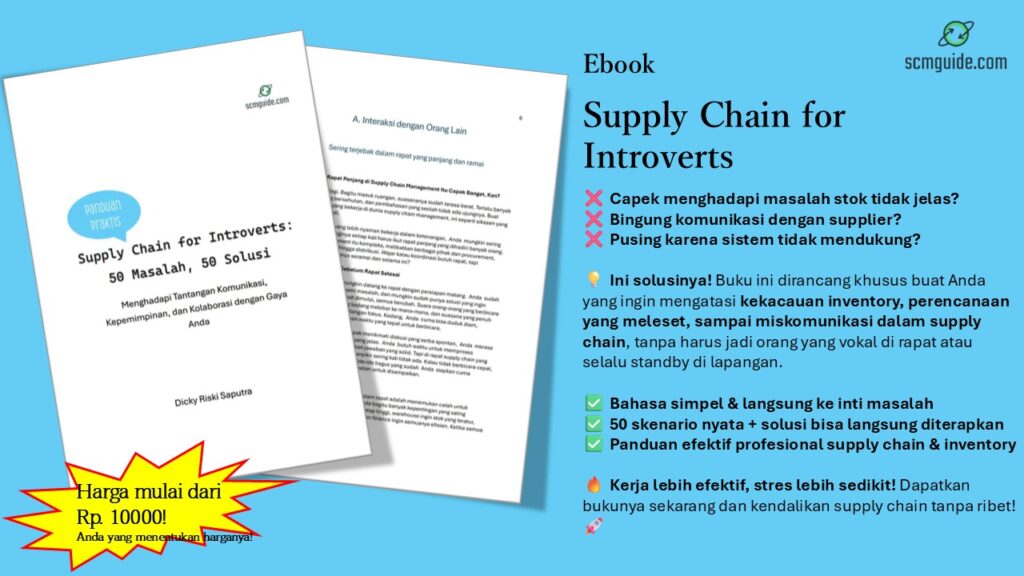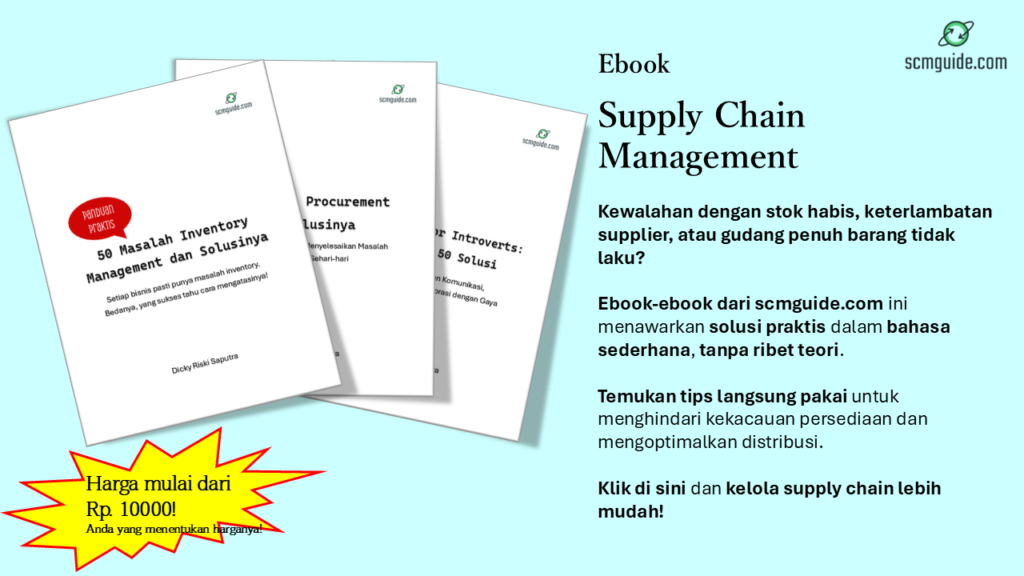If you’re steering the ship of your organization’s supply chain, you know the importance of keeping things sailing smoothly. But here’s the million-dollar question: How do you ensure your team members are not just following SOPs but doing so with discipline?
Fear not, because we’ve got your back.
In this blog post, we’re going to explore the art of keeping your supply chain crew on track, from the power of Key Performance Indicators (KPIs) to the magic of Genba checks.
Before we go further into this topic, don’t forget to follow my LinkedIn account. You’ll get more helpful insights on supply chain management there.
Table of Contents
The SOP Conundrum
Standard Operating Procedures (SOPs) are the backbone of any well-oiled supply chain machine. They’re the guidelines, the rules of engagement, the secret sauce that keeps everything moving seamlessly.
However, as any seasoned manager knows, getting your team to adhere to SOPs with discipline can be a bit like herding cats. So, let’s dive into some strategies to turn your SOPs from mere guidelines into the gospel.
Key Performance Indicators (KPIs): The North Star
Picture this: sailing the high seas without a compass. Now, that’s a recipe for chaos, isn’t it?
Well, managing a supply chain without KPIs is pretty much the same. KPIs are like our trusty North Star, steering the ship of success and efficiency. They’re not just abstract metrics; they’re the guiding lights that keep us on course.

So, let’s talk turkey – define those KPIs!
Break it down for each leg of the supply chain journey. Whether it’s the time it takes to fulfill an order, the dance of inventory turnover, or the precision of delivery accuracy, these metrics become the yardsticks for your team’s performance.
It’s not about drowning in numbers; it’s about having a compass that says, “This way to SOP discipline!”
Take your crew on this journey – make sure they not only see the KPIs but understand why hitting them is the key to smooth sailing in the vast ocean of supply chain management.
You might also like:
- Balancing Flexibility and Efficiency in Manufacturing for Better Supply Chain Management
- How Your Personality Affects Your Performance in Supply Chain Management
Genba Checks: The Reality Check
Let’s talk about a little Japanese magic called “Genba.”
It’s not a spell or a secret ninja move; it’s simply all about getting down to the nitty-gritty – the real place where the action happens.
In our supply chain universe, Genba checks are like our superhero cape. Instead of being stuck in your office, it’s time to put on that cape and hit the ground. Go to the spots where the gears are turning and see it all unfold with your own eyes.
No more armchair management – it’s time for some hands-on action! Schedule those Genba checks like they’re treasure hunts.
Wander through the warehouse, check out the loading bays, and sneak a peek at the assembly line.
This isn’t about micromanaging; it’s about making sure our SOPs are like a well-choreographed dance.
Look for the clear and keyed items, dive into inventory levels, and give those processes a nod or a shake if needed.
This on-the-ground approach isn’t just about keeping the team on their toes; it’s about building a culture where everyone’s accountable for the success of our supply chain adventure.
Maintaining Awareness: The 360-Degree View
Alright, let’s talk about staying in the know – it’s the name of the game in the supply chain world.
You’ve got to be like Sherlock Holmes, always with your finger on the pulse of every move in the process. Don’t let things sneak up on you; know what’s happening in real-time.

Now, cue the techno beats – it’s time to leverage the wizardry of technology. We’re talking about real-time tracking systems and data analytics. Picture it like having a supply chain crystal ball – you can peek into inventory levels, check the status of those orders, and even predict when that delivery truck is rolling in.
This isn’t just about being a tech whiz; it’s about having the upper hand.
With this comprehensive understanding of the entire supply chain circus, you’re not just putting out fires – you’re preventing them.
And trust me, that proactive approach is the secret sauce to keeping those SOPs in line and disciplined
You might also like:
- Unlocking the True Potential of ERP Systems: Beyond Data Recording
- In Supply Chain Management, Past Experience Alone Is Not Enough for Success
Motivation: The Fuel for Discipline
Let’s talk about the dynamic duo of discipline and motivation – they’re like Batman and Robin, unstoppable when they’re together.
Discipline without a sprinkle of motivation is like a car with an empty tank – it’s not going anywhere fast. So, here’s the deal: create a workplace that’s not just an office but a vibe, a positive space where your team feels like they’re part of something awesome.
Now, imagine you’re the chief cheerleader, rallying your troops. Recognize those unsung heroes, the ones who go above and beyond. Throw in a high-five, a shout-out, or even a golden star – whatever floats their boat.
But it’s not just about cheering from the sidelines; it’s about fostering a culture where improvement is the name of the game.

Give them the tools they need – training, development, maybe even a mentorship program.
When your team feels like they’re not just cogs in the machine but valued players in the game, you’ve struck gold.
And trust me, a motivated team is a disciplined team – those SOPs will be followed with the precision of a synchronized dance.
But Wait, There’s More!
The journey toward ensuring SOP discipline doesn’t end here. Continuous improvement is the name of the game. Stay tuned as we explore additional strategies, including effective communication, collaboration, and the role of leadership in fostering a disciplined supply chain environment.
Communication: The Glue that Binds
Ever played the game “Chinese whispers”? It’s fun at parties but disastrous in supply chain management.
Clear and effective communication is crucial to ensuring that SOPs are not just understood but followed to the letter.
Regularly communicate updates, changes, and expectations to your team.
Foster an open-door policy where team members feel comfortable expressing concerns or seeking clarification.
A well-informed team is a disciplined team.
Collaboration: Strength in Unity
Supply chain management is a team sport.
Break down silos and encourage collaboration among different departments. When everyone is on the same page, it becomes easier to ensure SOP discipline.
Conduct regular cross-functional meetings to discuss challenges, share insights, and brainstorm solutions. Collaborative problem-solving not only strengthens your team but also enhances overall supply chain efficiency.
Leadership: Setting the Tone
As a supply chain manager, you’re not just a captain; you’re a leader. Your actions set the tone for the entire team. Lead by example and demonstrate the importance of SOP discipline in your own work.
Be accessible, approachable, and willing to get your hands dirty when needed. Your leadership style influences the culture of your team, so make sure it reflects the values of discipline, accountability, and continuous improvement.
Conclusion: The Never-Ending Journey
Ensuring SOP discipline in your supply chain is a journey, not a destination. Embrace the continuous improvement mindset, stay adaptable, and be ready to evolve with the ever-changing landscape of the industry.
From KPIs to Genba checks, communication, collaboration, and leadership, every piece of the puzzle plays a vital role in maintaining a disciplined supply chain.
So, fellow supply chain navigators, buckle up and get ready for the ride. The seas may get rough, but with the right strategies and a disciplined crew, you’ll navigate through any storm. Here’s to smooth sailing and a supply chain that operates like a well-choreographed dance!
I hope you find it helpful!
Please share this article with your colleagues so they can also benefit. For more insights on supply chain management, follow my LinkedIn account. You’re free to use all articles on this blog for any purpose, even for commercial use, without needing to give credit.

 by
by 



